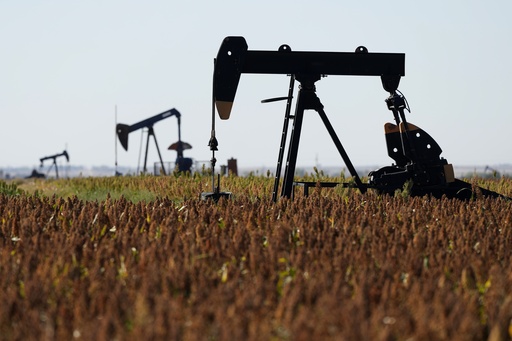
BAKU, Azerbaijan — Recent data highlights that cities in Asia and the United States are the largest contributors to heat-trapping gases, primarily driving climate change, with Shanghai being the highest emitter. This information stems from new findings that utilize both observational data and artificial intelligence techniques.
According to insights released at the United Nations climate negotiations in Baku, Azerbaijan, seven regions globally release over 1 billion metric tons of greenhouse gas emissions. All of these are situated in China, with the exception of Texas, which occupies the sixth position in global rankings. The conference attendees are actively engaged in discussions aimed at establishing new emissions reduction targets, as well as deliberating on monetary contributions from wealthier nations to assist in alleviating climate issues.
In a groundbreaking study, Climate Trace harnessed satellite and ground-level observations, alongside artificial intelligence, to measure emissions of carbon dioxide, methane, nitrous oxide, and various conventional air pollutants from over 9,000 urban areas worldwide. The collective carbon dioxide and methane emissions from the Earth have risen by 0.7% to total 61.2 billion metric tons, with short-lived yet potent methane increasing by 0.2%. Gavin McCormick, co-founder of Climate Trace, noted the significant emissions levels, stating they are higher than other estimates due to extensive coverage and the observation of emissions across more sectors.
Prominent urban centers are emitting gases at levels surpassing entire nations. For instance, Shanghai produces 256 million metric tons of greenhouse gases, outpacing the total emissions of countries like Colombia and Norway. Similarly, Tokyo’s emissions reach 250 million metric tons, placing it within the upper echelon of national emissions if it were a sovereign body. New York City and Houston follow suit with 160 million and 150 million metric tons, respectively, both ranking among the top 50 global emitters, while Seoul, with 142 million metric tons, sits at fifth place among cities.
During the discussions, Al Gore pointed out that a specific site in Texas’s Permian Basin is the largest single polluting site in the world. He mentioned his surprise at the extent of pollution from this location, compared to notorious sites in other countries, including Russia and China, emphasizing the scale of its emissions.
In examining state and provincial contributions, it was found that China alone has seven regions responsible for over 1 billion metric tons in greenhouse gas emissions. Shandong leads this group with 1.28 billion metric tons, followed by other provinces such as Hebei, Shanxi, Inner Mongolia, Jiangsu, Guangdong, and Texas.
The data further reveals contrasting trends in greenhouse gas emissions across various nations between 2022 and 2023. Countries such as China, India, Iran, Indonesia, and Russia experienced notable increases, while Venezuela, Japan, Germany, the United Kingdom, and the United States saw significant decreases. In addition to greenhouse gases, traditional pollutants such as carbon monoxide, volatile organic compounds, ammonia, sulfur dioxide, and other harmful substances were also analyzed, all stemming from fossil fuel combustion, which Gore remarked is a leading cause of detrimental air quality and related health issues, killing millions globally each year.
Gore also expressed his concern regarding the hosting of climate talks in oil-rich nations like Azerbaijan and the United Arab Emirates, criticizing the undue influence of fossil fuel interests over the COP process. He looks forward to changes expected in next year’s discussions in Brazil, where President Luiz Inácio Lula da Silva has called for enhanced climate action and efforts to combat deforestation. Nevertheless, Brazil’s oil production last year surpassed that of Azerbaijan and the United Arab Emirates, illustrating the complexity of the situation.
